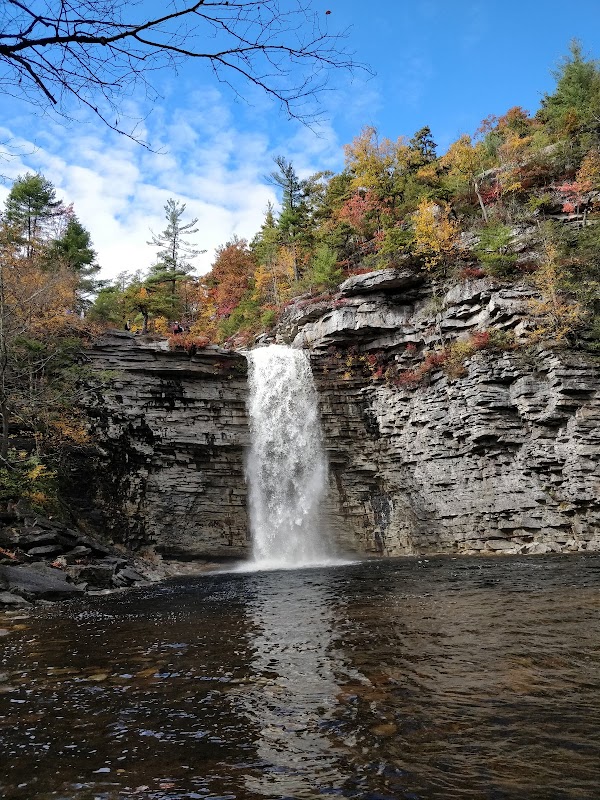
Discovering the Shorebird Festival: A Practical Adventure in Shirley, New York
Experience the Local Shorebird Festival in Shirley, New York — a hands-on exploration of coastal landscapes alive with migrating shorebirds and salt marsh trails. Perfect for nature lovers seeking a practical guide to spotting wildlife while enjoying accessible hikes close to the bay.
Bring Reliable Footwear
Soft sand and marsh boardwalks can be tricky. Choose sturdy, waterproof hiking shoes with good traction.
Hydrate Frequently
Coastal air and sun can dehydrate you faster than expected. Carry at least 2 liters of water for a half-day outing.
Use Binoculars
Binoculars or a spotting scope vastly improve birdwatching and make distant shorebirds visible without disturbance.
Plan Around Tide Times
The best bird activity and trail access align with low tides. Check tide charts to time your visit for optimal viewing conditions.
Discovering the Shorebird Festival: A Practical Adventure in Shirley, New York
Every spring, as the air warms and migratory patterns bring nature's rhythm into focus, Shirley, New York, hosts the Local Shorebird Festival—a gateway to the coastal wilderness where birdwatchers and outdoor explorers converge. This festival isn’t just an event; it’s an outdoor invitation to engage with a fiercely alive ecosystem where shorebirds press against the tides, daring you to observe their elegant precision.
Set near the Shinnecock Bay and nearby preserves, the festival offers practical access to shoreline walks and birdwatching hikes with varied terrain. Trails here span manageable distances of 2 to 5 miles, primarily flat with soft sand, salt marsh boardwalks, and segments of grassy meadows. Elevation gain is minimal, typically under 100 feet, making it approachable for most hikers, although sandy and sometimes uneven paths require sturdy footwear.
Prepare for sweeping views where the bay’s water plays with the wind, and the marsh grasses sway as though whispering secrets between each step you take. The sounds of distant wings and calls fill the air, nature’s own soundtrack for your adventure. Early morning or late afternoon hikes show shorebirds in busy activity, feeding or flying in formations, dovetailing with the ebb and flow of the tides.
Practical preparation is key. The coastal environment demands hydration and sun protection—wide-brimmed hats and layered clothing are your allies against unexpected weather shifts. Bring binoculars or a spotting scope to make the most of birdwatching, plus a camera for capturing moments where light and wildlife harmonize.
The festival itself includes guided walks, talks by local naturalists, and educational booths, making it ideal for casual visitors keen to learn and seasoned birders eager to track rarer species. The interaction between people and this coastal landscape gives the place a charged energy, impressing upon participants a respect for the delicate balance between land, water, and wildlife.
For overnight stays, nearby Hampton Bays provides practical lodging and dining options, allowing visitors to extend their time exploring Long Island’s unique shorebird habitats. As you walk, you sense the shore’s personality—wild, purposeful, and constantly renewing itself through the tides’ push and pull.
Whether your adventure is a brief day trip or part of a weekend exploration, the Local Shorebird Festival offers a blend of discovery, natural challenge, and practical guidance that leaves you well-equipped and inspired. This is an outdoor experience where the environment invites interaction on terms that demand attention and reward patience. Come prepared, stay curious, and let Shirley’s shorebirds and salt marshes define the pace.
Nearby Trips
All Adventures
Boat Charters
Water Activities
Adventures near Shirley, New York
Discover the unique and memorable adventures that make Shirley, New York special.
Frequently Asked Questions
What species of shorebirds can I expect to see during the festival?
The festival highlights migratory shorebirds like sandpipers, plovers, and terns, with occasional appearances of rarer species such as the piping plover and black-bellied plover, especially during peak migration periods in spring and fall.
Are the hiking trails accessible for families with young children?
Yes, the trails around the festival grounds are relatively flat and short, making them suitable for families. However, sandy and boardwalk sections may require supervision, especially for toddlers.
Can I bring my dog to the festival and trails?
Dogs are typically permitted but must be kept on a leash to protect wildlife. Be mindful of nesting shorebirds that can be sensitive to disturbance.
Is parking available near the festival location?
There are designated parking areas near the main festival sites in Shirley and adjacent preserves. Arriving early is advised, as spots can fill quickly during busy weekend events.
What are the best times of day to see the most bird activity?
Early morning and late afternoon coincide with low tide periods, when shorebirds feed actively along exposed mudflats, offering the best observation opportunities.
Are there local guides available for birdwatching during the festival?
Yes, the festival organizes guided walks led by experienced naturalists who provide insights into bird identification and habitat preservation.
Recommended Gear
Binoculars
Brings shorebirds into clear view without disturbing their habitat.
Water Bottle (2 liters)
Keeps you hydrated, especially under summer heat and humidity.
Waterproof Hiking Shoes
Protects feet from wet sand and marshy terrain, providing secure footing.
Layered Clothing
Allows easy adjustment to changing temperatures and weather conditions.
Local Insights
Hidden Gems
- "The western edge of Shinnecock Bay offers quiet observation points with less foot traffic."
- "Look for the small freshwater pond near the festival grounds where less common waterfowl gather."
Wildlife
- "Keep an eye out for the elusive saltmarsh sparrow and the occasional osprey gliding above the bay."
- "Tidal pools along the shore reveal fiddler crabs and small fish, part of the ecosystem’s food chain."
History
"The area has long been significant to local Indigenous communities, notably the Shinnecock Nation, who have stewarded these lands and waters for centuries."
